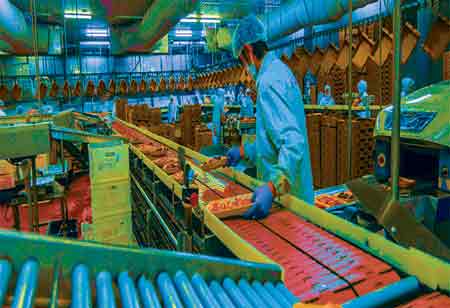Thank you for Subscribing to Food Business Review Weekly Brief
- Home
- Topics
- Alternative Proteins and Plant Based Food
- Beer and Wine
- Canned Beverages
- Coffee And Tea
- Food and Beverage Consulting
- Food and Beverage Financial Service
- Food And Beverages Marketing
- Food Distributors
- Food Ingredients
- Food Sustainability
- Plant Based Food and Beverages
- Seafood Suppliers
- Supplement Manufacturing
- Wine Investment
- News
- Vendor Viewpoint
- CXO Insights
- Conferences
- Newsletter
- CXO Awards
-
Businesses are Reinventing Themselves to Remain Competitive
Restaurants are poised to lose billions following the shelter-in-place order, which forced them to pivot to only offering takeout and delivery.

By
Food Business Review | Saturday, January 28, 2023
Stay ahead of the industry with exclusive feature stories on the top companies, expert insights and the latest news delivered straight to your inbox. Subscribe today.

The pandemic took a toll on the restaurant industry. The restaurant industry was on track to bring in billions before the virus hit.
FREMONT, CA: Restaurants are poised to lose billions following the shelter-in-place order, which forced them to pivot to only offering takeout and delivery.
Even though the restaurants are allowed to open at a reduced capacity, it still needs to be solved to reconcile the razor-thin profit margin with mandated safety measures they must adhere to reopen, according to the state government.
Food distributors scramble to survive-and not all make through: Approximately half of the food industry's revenue comes from the food service sector, while the other half comes from grocery store sales. The packaging and pricing differences between the two supply chains prevent the two from crossing for the most part.
More than half of the food services industry is provided by non-commercial operators such as schools, healthcare facilities, prisons, and other public and private institutions. Aside from restaurant closures, food distributors suffered from hospital cafeteria cuts and the disappearance of amusement parks, sports venues, and other away-from-home dining options. Universities and schools have shut their doors, and many have decided to operate virtually in the fall.
Technology provides the pivot restaurants need: Eating out has changed due to sheltering-in-place requirements. There will be a need for restaurants to adapt to the COVID era to survive.
According to restaurant business online, one-third of consumers take out more than before the pandemic. While a majority plan to cook more home-cooked meals after the virus passes, we still see a reluctance to go to restaurants in person. Owners of restaurants will have to be creative if they want to retain diners while also attracting home-cooking diners.
Embrace the cloud: Restaurants are already using the cloud for managed network services since food is their business, not technology. Cloud computing provides greater bandwidth and reliability since stores are connected to the internet. It is predicted that apps will be the next significant shift.
Build trust and transparency: Achieving the highest safety and cleanliness standards will give consumers confidence when dining out. The IoT devices will conduct regular monitoring of supply chain items, temperature controls, and safety checks.
As industry leaders consider how best to recover from COVID-19, technologies to streamline supply chain management, payment processing, and restaurant operations have become more mainstream. To stage a culinary comeback, restaurateurs will explore these innovative methods of attracting and retaining cautious diners.






